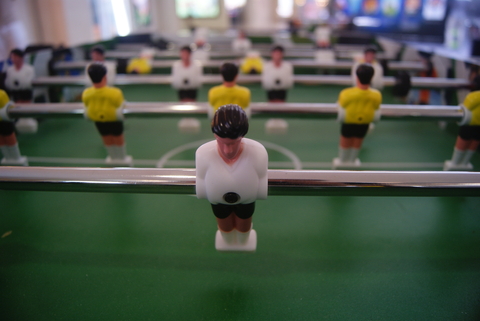Proximity and Efficiency: Central Europe Becomes a Hub for Bike Production
The bicycle and e-bike industry is undergoing a transformative shift in 2025, with Central Europe (C
moreXtreme Fitness Gyms Targets Dominance in Eastern European Fitness Market
Polish fitness franchise Xtreme Fitness Gyms is making waves in the fitness industry, celebrating th
moreAdidas Expands Presence in Switzerland with Zurich Branch
Adidas, the global sporting goods powerhouse, is strengthening its foothold in Central Europe (CE) b
morePolish Brand 4F Becomes Official Technical Supplier for National Volleyball Teams
Polish sportswear brand 4F has announced a landmark partnership, becoming the official technical sup
moreFriction Labs Joins Crag Sport Portfolio: A New Business Partner for Climbers in Central Europe
Krakow-based Crag Sport, a recognized expert in business development in Central Europe (CE), has exp
more
"Business
Partner search for the Sports industry in Central Europe"
You are here » Home Page
» CE Sports Business News
» Sports Toy and Kids’ market remains strong in Russia
 2016-03-13
source own
2016-03-13
source own
Sports Toy and Kids’ market remains strong in Russia
 2016-03-13
source own
2016-03-13
source own
With economic downturn being a regular occurrence across the world in recent times, many industries have struggled to survive but one market that has remained stable throughout the turbulent times is the toys, games and kids’ market in Russia. The main reason for this seems to be the parents mindset as they don’t want their children to have to suffer no matter how weak the economy is.
With the recent changes in the value of the rouble, coupled with the change in EU sanctions, many retail outlets have paid the price with a loss of sales. However, not one of the major chain stores that specialise in the children’s market has announced any kind of financial problems. In addition to this, the largest company of this type in Poland, SMYK, has managed to come through the poor economic times without having to cut any stores.
When the figures were announced just recently, a growth of 1.5% has actually been enjoyed in this market when compared to the previous year; this means that total sales in 2015 reached $9 billion. Elsewhere, many industries have struggled; in particular, sales of white goods, cars and many other expensive purchases have slowed somewhat. Real estate has also decreased in Russia as a result of the delayed demand as consumers are waiting for things to improve before spending.
However, despite the good news in the short term, the future doesn't look quite as bright for the toys and kids industry as many retailers have announced plans to reduce the amount they order. Plans to reduce margins and cut logistics costs has strongly hinted that companies will be buying with OEM manufacturers and therefore dropping local producers. It is widely believed that Detsky Mir, Dochki-Synochki and Behemoth have all placed orders with OEM manufacturers in Russia which is welcome news for Ralf Ringer, the BTK Group, Midisa and Sky Lake who are the biggest manufacturers in the Eurasian Customs Union.
Many retailers were well-known for ensuring that a certain percentage of their stock was sourced nearby with Dochki-Synochki keeping this figure at around 70% but this has changed in recent times as they seek cheaper alternatives elsewhere. Many companies have found that they can get cheaper products, such as electronic cars, in Asia which has had and will have a dramatic effect on the market. For example, very few orders are placed locally by Gulliver & Co Trading House which is Russia’s biggest, oldest and potentially most popular toy store. Instead, they now source from Asia and state that they hadn't really had a choice as local companies could not keep up with demand nor adhere to the changing demands of the market.
Southeast Asia are well aware of the current situation that is constantly developing in Russia as well having been advised to visit websites in an attempt to gain business. As a result, local Russian manufacturers are suffering and the future doesn't look bright as there are no real signs of change. The Russian market is slightly different to others around Europe and companies have found out the hard way. For example, Hello Kitty proved to be a very costly mistake that never really caught wind yet the Smurfs have seen a wealth of popularity.









